Black Chokeberry (Aronia melanocarpa)
The black chokeberry’s leaves offer a wide range of colours in the fall, from orange to red to purple. Its bluish-black berries contrast against this colourful backdrop, maturing relatively late in the growing season (from late summer to early autumn). The berries can be eaten raw for a tarter taste, or made into jellies, jams, or pies. Birds (such as the cedar waxwing) also love them during the fall and winter. The black chokeberry can tolerate a wide variety of soil types, as well as wet conditions, so it’s a great choice for many yards.
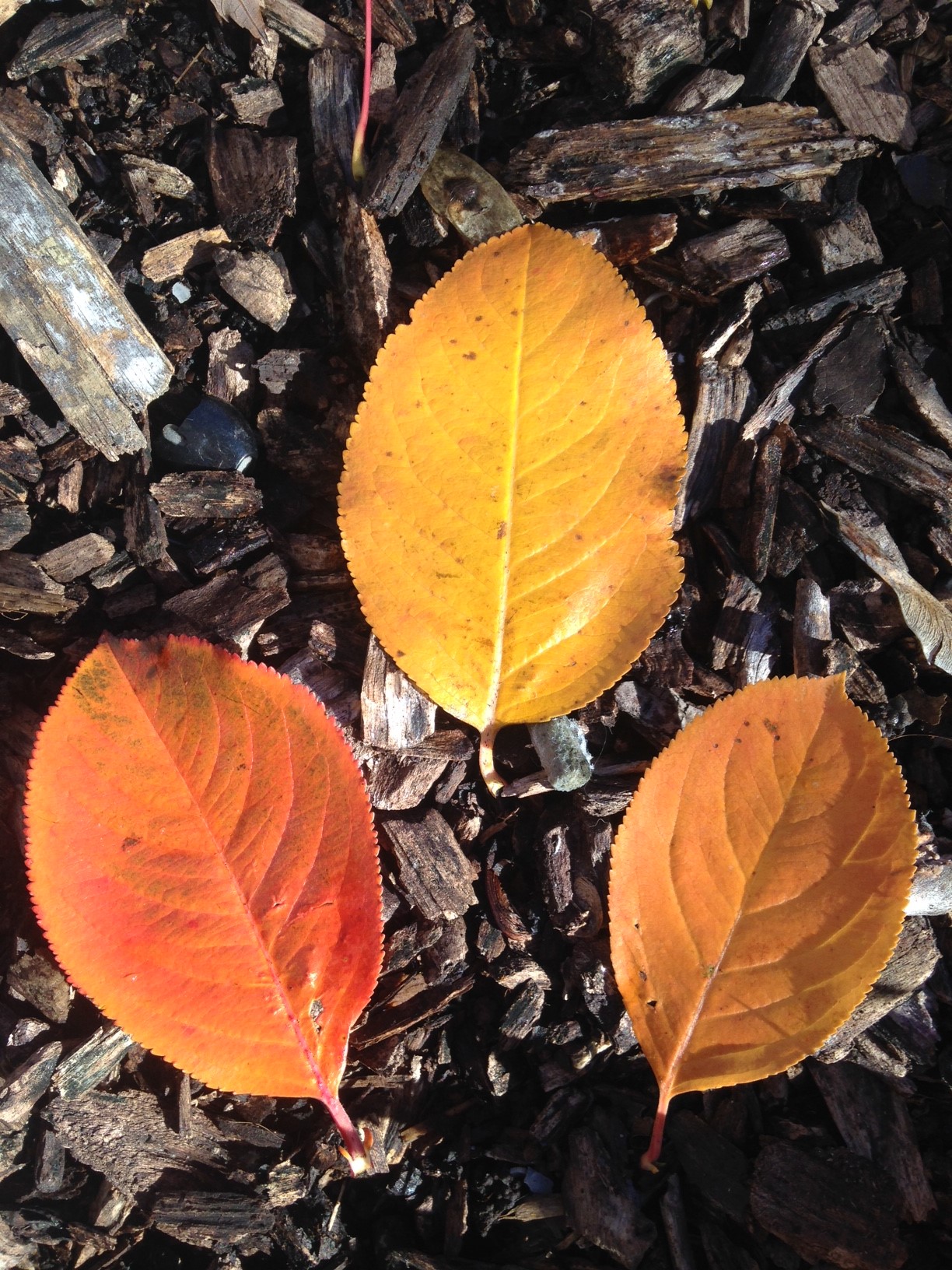
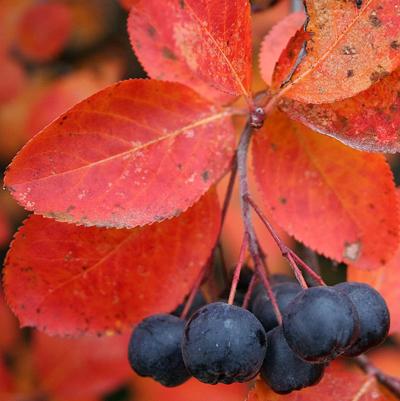
Common Ninebark (Physocarpus opulifolius)
The common ninebark’s leaves turn a bright yellow in the fall, before dropping to the ground to showcase the shrub’s distinctive, peeling bark. Ninebark fruit sometimes persists throughout the winter, in the form of papery, inflated seed capsules that are pinkish-red in colour. Although not edible for humans, the fruit is a good food source for many bird species. Like the black chokeberry, this shrub tolerates a variety of soil conditions, so it can be planted in many places.
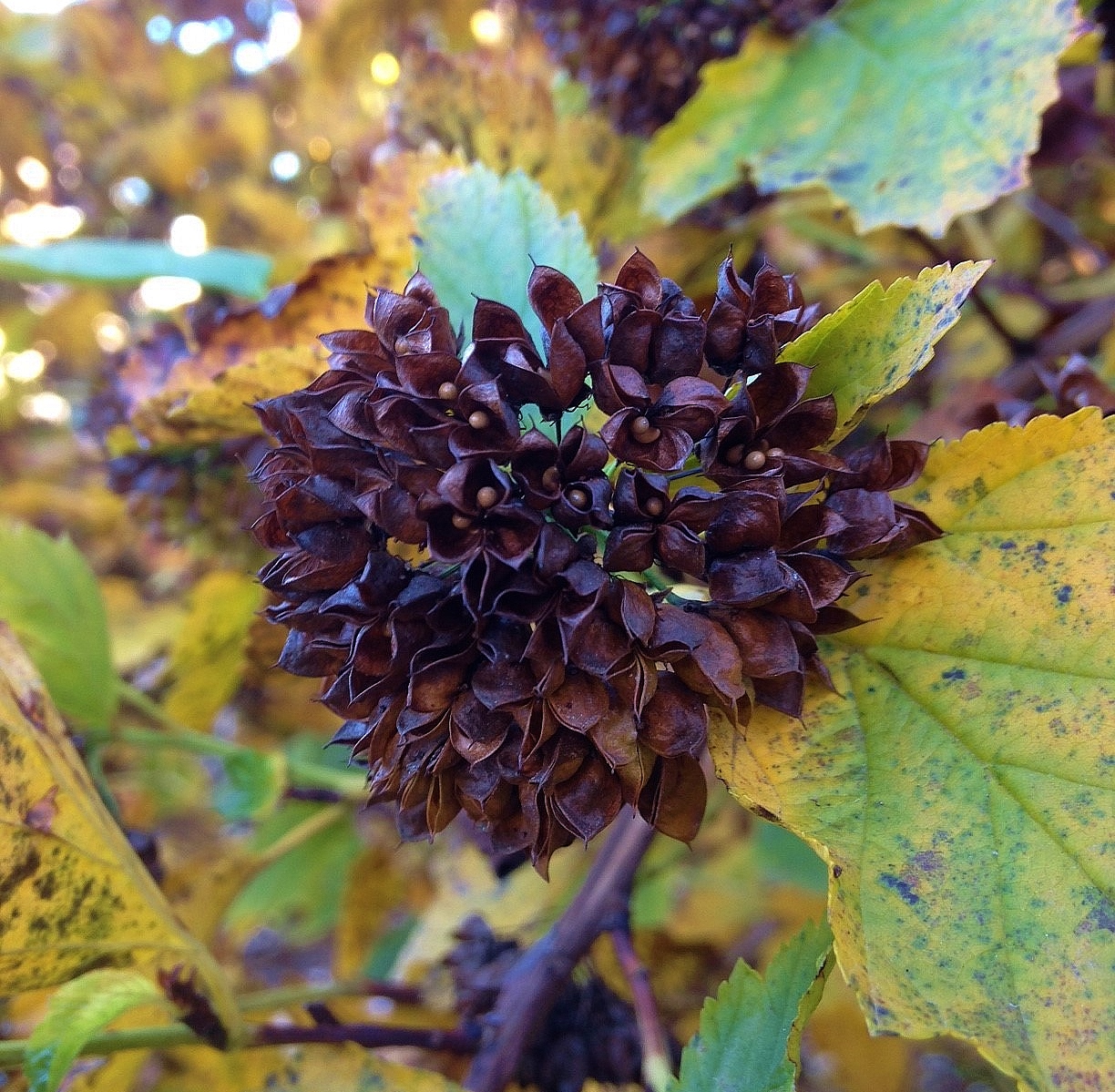

Common Snowberry (Symphoricarpos albus)
The leaves of this shrub may not be much to look at in the fall season (though their pale green colour does contrast with much of the surrounding foliage). However, the snowberry’s white fruit is certainly striking, and matures later in the year - late summer to early autumn. Berries persist on the shrub during the winter, making them an important food source for many birds, such as thrushes, waxwings, and robins. The common snowberry grows in a variety of soils, and does well in many different sun conditions (from full sun to shade).
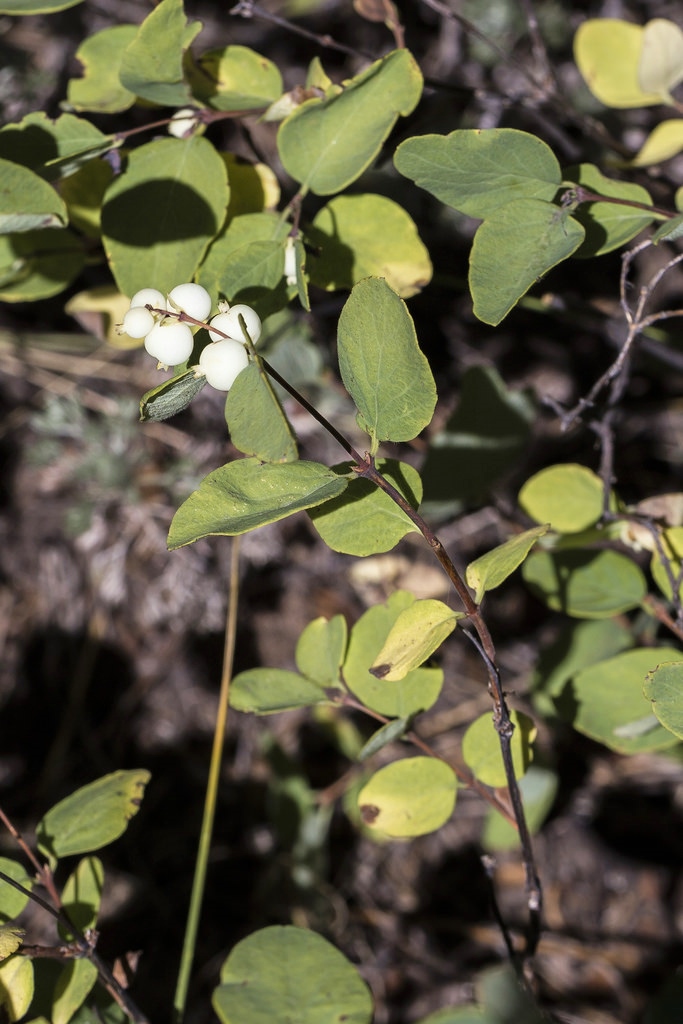
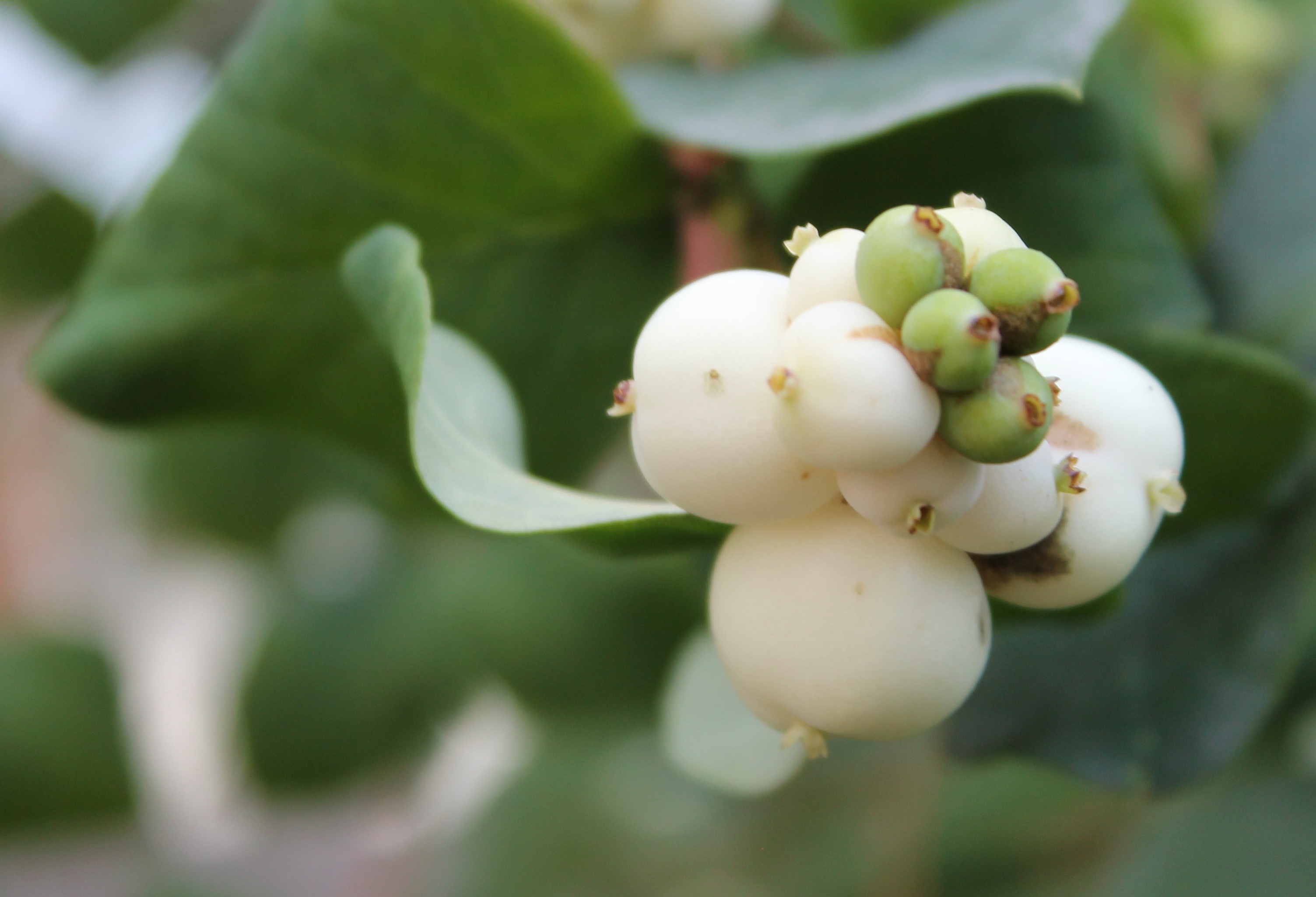
Highbush Cranberry (Viburnum trilobum)
Last on our list (but certainly not least!) is the highbush cranberry. During the fall, its leaves turn a striking red to purple colour. The fruit, although not a true cranberry, resembles cranberries in colour and size, and stays on the shrub through autumn and winter, providing important food for wildlife. Although the berries are bitter when raw, they can be processed to make sauces, jams, jellies, and pies. Because this shrub is tolerant of a variety of soil conditions, it makes a great addition to many backyards.
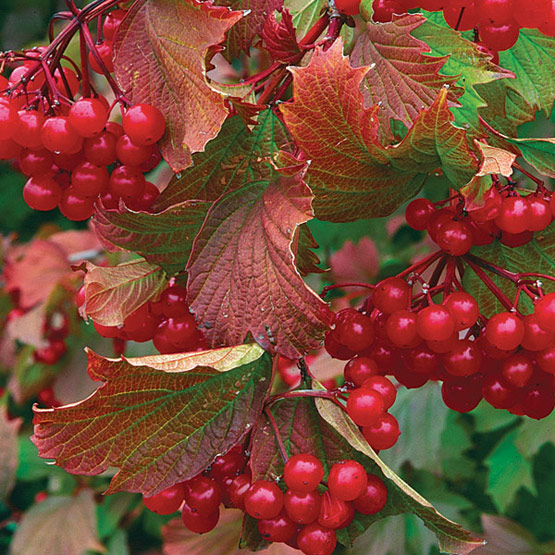
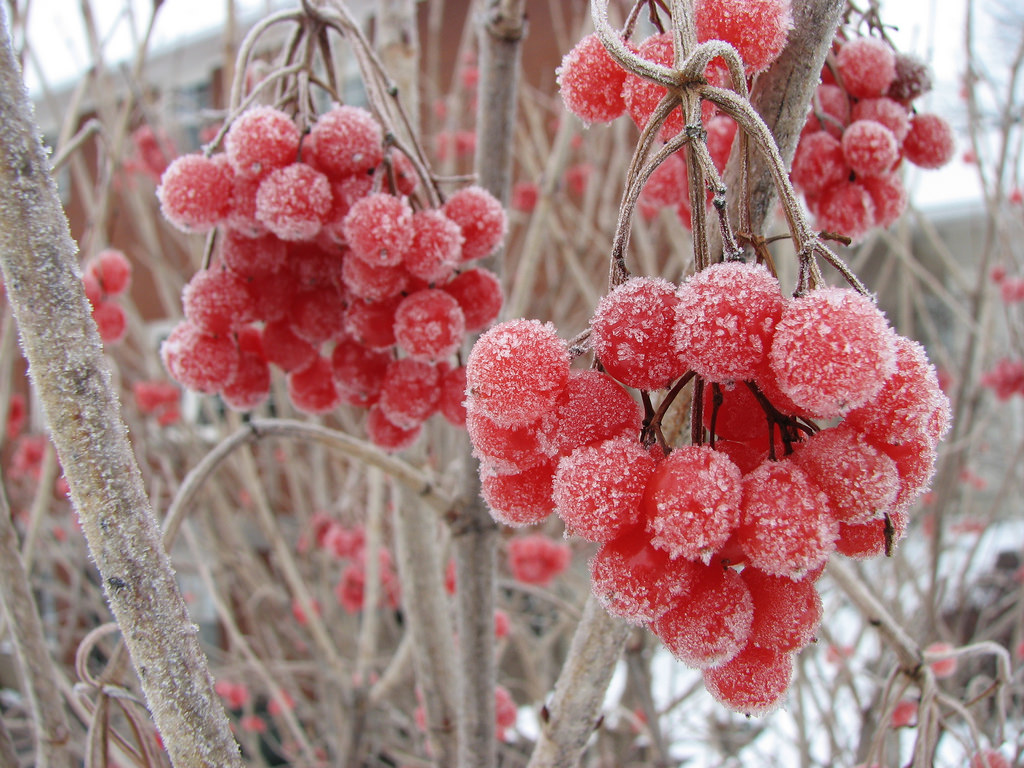
Whether it’s their beautiful leaf colours, their late-season fruit, or the wildlife they attract, the four shrubs highlighted here are great additions to the autumnal urban forest.
Did you know that fall is a perfect time to plant? Visit www.yourleaf.org to order these and other shrubs to plant in your own yard this fall!
Montanna Diakun is LEAF’s Planting and Stewardship Intern. She is a graduate of the Masters of Forest Conservation Program and recently certified as an Arborist through the International Society of Arboriculture.
The Backyard Tree Planting Program is supported by The Regional Municipality of York, City of Markham, Town of Newmarket, Town of Ajax, City of Toronto, and Toronto Hydro.
